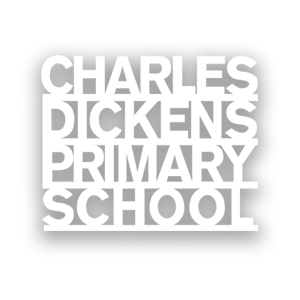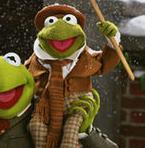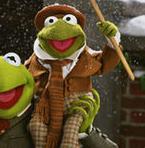Congratulations to our team for representing the school at the Southwark 24 Game Tournament. Twelve Schools participated in the first of two preliminary rounds with the four highest scoring teams gaining places to the Finals. The hall was full of nerves, whirling brains of mathematical formulae and, above all, enjoyment at competing in this exciting subject. Our team played brilliantly, with every member scoring points on each round and winning some individual rounds. When the final scores were read out Charles Dickens took 5th place with 188 – only 1 point behind 4th, 4 behind 3rd and 8 behind 2nd place! A close and nail biting competition all round. Despite not making it through to the next round, the children enjoyed it and, as ever, were a credit to the school with their manners, politeness and friendliness when meeting pupils from other schools. Well done!
[simple_slideshow]
On your marks, set……24!
Today the members of 24 Club took part in an exhilarating and nerve racking tournament to select the squad who will represent the school at the Southwark Tournament. The children have been honing their skills with their Maths’ Volunteers, from PWC (Price Waterhouse Coopers), on Wednesday and Thursday lunchtimes and today they tested them in a competitive arena.
[simple_slideshow]
The children were split in to teams of three and rotated from table to table collecting points for both themselves and the team. Look at the photos and see how many cards you can solve. For each card you need to use all the numbers, any of the four operations and make a total of 24. The first person to solve it gets the points. The number of dots in the corner shows how many points each card is worth – 3 being the most challenging.
Well done to the individual winners and to the winning team. Watch this space to see who is selected to represent the school at the tournament in June. A big thank you goes to Mrs Taylor who ran the event and to the Volunteers for PWC for umpiring mathematical decisions and presenting the certificates.
Tiny Tim’s Maths Tips – Year 1 and 2 Addition continued…
The next stage is children producing more formal recordings using their own ‘blank number lines‘ (often referred to as BNL). Children are able to ‘count on‘ in ones (they do this in their heads but record their ‘working out‘) and circle the answer. (Slides 1, 2, 3 and 4)
When dealing with adding two digit numbers (eg 14 as opposed to a one digit number such as 8) they need to ‘partition‘. They split the smaller number in to ‘tens‘ and ‘units‘ and then on their number line first of all ‘jump on’ the ‘T‘ and then the ‘U‘. (Slides 5, 6, 7 and 8). This is even more challenging when crossing the tens (in this case over 50)
In the final example (Slides 9 to 14) the child models using the above method and a ‘more efficient‘ method. This can be solves by jumping in tens and ones or, as on slides 13 and 14, in a jump of 20 and a jump of 3.
I hope this helps with addition at home. Remember giving maths a context makes it more real, more fun and gives it a reason for learning it. Watch this space for the next blog on Multiplication…….
Tiny Tim’s Maths Tips – Year 1 and 2 Addition
Children understand addition best when it is taught alongside subtraction. Furthermore learning is better if given a context as mathematical concepts are difficult to grasp without them. For younger children counting people and objects (toys, buttons etc.) and questions such as ‘There are three children at a table and two more sit down. How many now?’ leading to older children’s understanding of ‘A drink costs 56p and an apple 24p. How much do they cost altogether?’ provide children a reason for learning addition. Calculation methods are taught and learnt to be used to solve problems such as these.
As with subtraction, children first need to use ‘concrete‘ resources, such as cubes, and will physically combine and touch them to find the total. (Slides 1 and 2)
[simple_slideshow]
Children then start creating their own informal ways of recording this. (Slides 3 and 4)
As children experience ‘100 squares’ and ‘number lines’, they are able to count to higher numbers they use these to support their calculating skills. Children learn to count forwards, ‘one more‘ (and later ‘ten more‘), and use given ‘number lines‘ to solve addition. (Slides 5 and 6)
24 Club
How would you make 24? What times tables, addition, subtraction and division facts would you use? Could you do it under pressure? Could you explain it without stuttering or making mistakes?
These are some of the challenges faced by children in Years 5 and 6 who attend ’24 Club’ on Wednesday and Thursday lunchtimes with volunteers from PWC (Price Waterhouse Coopers). Later in the term there will be an inter-house competition to choose the three fastest players and they will represent Charles Dickens at the Southwark 24 Tournament in June.
[simple_slideshow]
Have a go yourself. The rules are that you must use all 4 numbers, can only use them each once, can use any of the four operations and the answer must be 24. The cards with one dot (worth one point in the tournament) in the corner are the easiest and often have multiple ways of solving; the cards with three dots (worth three points in the tournament) are far more of a challenge. Good luck!
Tiny Tim’s Maths Tips – Year 1 and 2 Subtraction continued…
The next stage is children producing more formal recordings using their own ‘blank number lines‘ (often referred to as BNL). Children are able to ‘count back‘ in ones (they do this in their heads but record their ‘working out‘) and circle the answer. (Slides 1, 2, 3, 4 and 5)
[simple_slideshow]
When dealing with subtracting two digit numbers (eg 15 as opposed to a one digit number such as 8) they need to ‘partition‘. They split the smaller number in to ‘tens‘ and ‘units‘ and then on their number line first of all ‘jump back’ the ‘T‘ and then the ‘U‘. (Slides 6, 7, 8, 9 and 10)
In the final example the child needs to ‘cross the tens‘ and it can help children to split the units, in this case the 9 in to a 4 and a 5, to jump back to 50 and then 45 rather then straight form 54 to 45. (Slides 11, 12, 13, 14, 15 and16)
I hope this helps with subtraction at home. Remember giving maths a context makes it more real, more fun and gives it a reason for learning it. Watch this space for next week’s blog on Addition…….
Tiny Tim’s Maths Tips – Year 1 and 2 Subtraction
Children understand subtraction best when it is taught alongside addition. Furthermore learning is better if it is given a context. For younger children a scenario such as ‘I had five oranges and we ate two. How many do we have left?’ leading to older children’s understanding of ‘I had two fifty pence coins and spent 25p at the shop. How much change did I receive?’ gives children a real reason for learning subtraction and is more engaging then an abstract calculation on its own. Calculation methods are taught and learnt to be used to solve problems such as these.
Many of the written methods learnt at school now differ from those parents and teachers learnt themselves. We teach them because they help understand ‘place value’ (for example what the 4 in 245 means as opposed to 425) and often link with what we do in our heads to solve a calculation.
When children first subtract they need to use ‘concrete‘ resources such as cubes and need to physically ‘take away‘ a given number to find the answer. (Slides 1 and 2)
Children then start creating their own informal ways of recording this. (Slides 3 and 4)
[simple_slideshow]
As children experience ‘100 squares’ and ‘number lines’ and are able to count to higher numbers they use these to support their calculating skills. Children learn to count backwards, ‘one less‘ (and later ‘ten less‘), and use given ‘number lines‘ to solve subtraction. (Slides 5 and 6)
Oliver Class Assembly – ‘Who Will Buy This Wonderful Morning?’
Oliver Class assembly was a mini musical, using songs from both ‘Oliver!’ and from around the world to share their learning about food and markets. We learnt about the journey of bananas from the field to the shops, the maths involving in shopping and about the variety of fruit and vegetable choices we are lucky to have available to us in London.
We were particularly impressed with the beautiful solo singing and the great videos children had made to capture their learning in the classroom – well done Oliver Class!
Christmas Maths
Something fun to try with your children over the holidays
click on the lick below – you will need sound!



